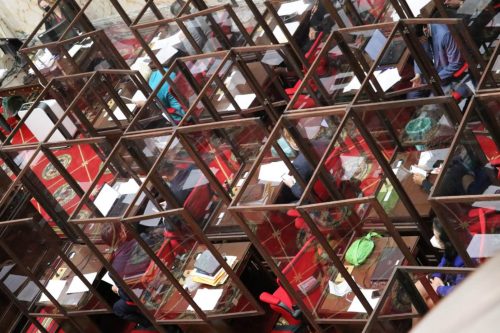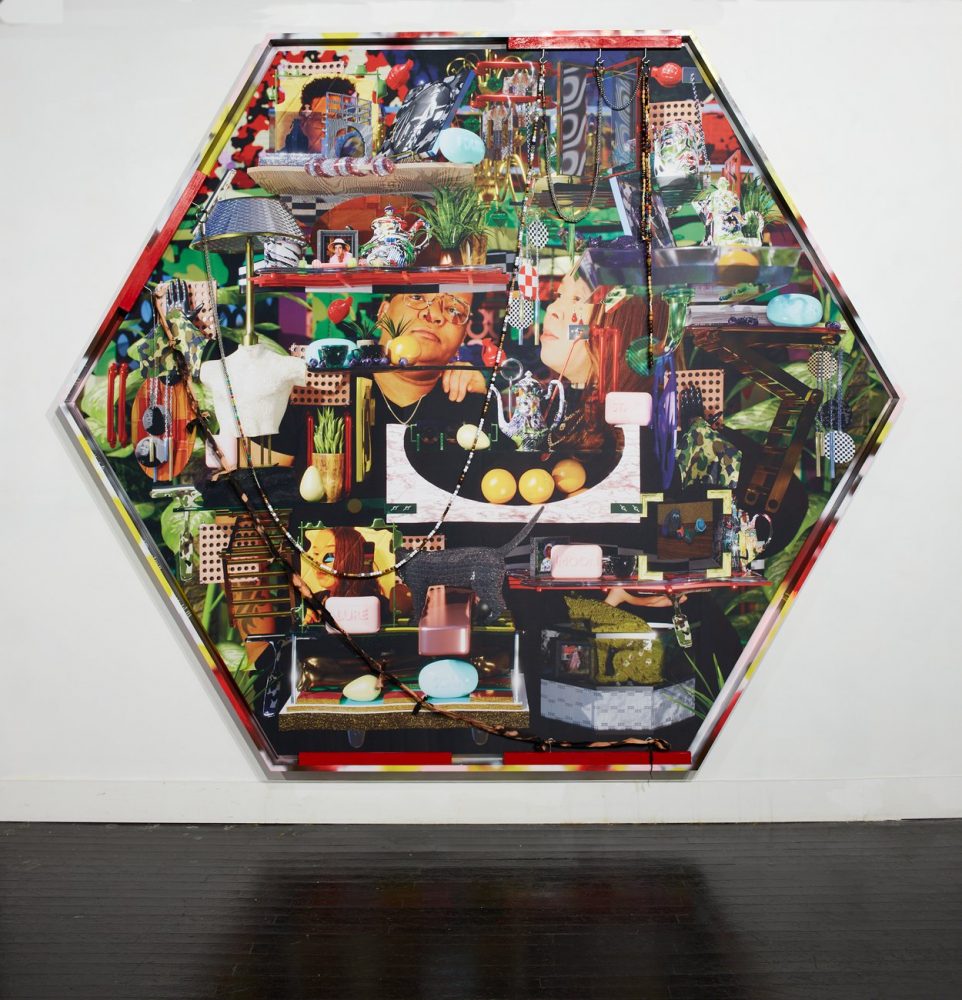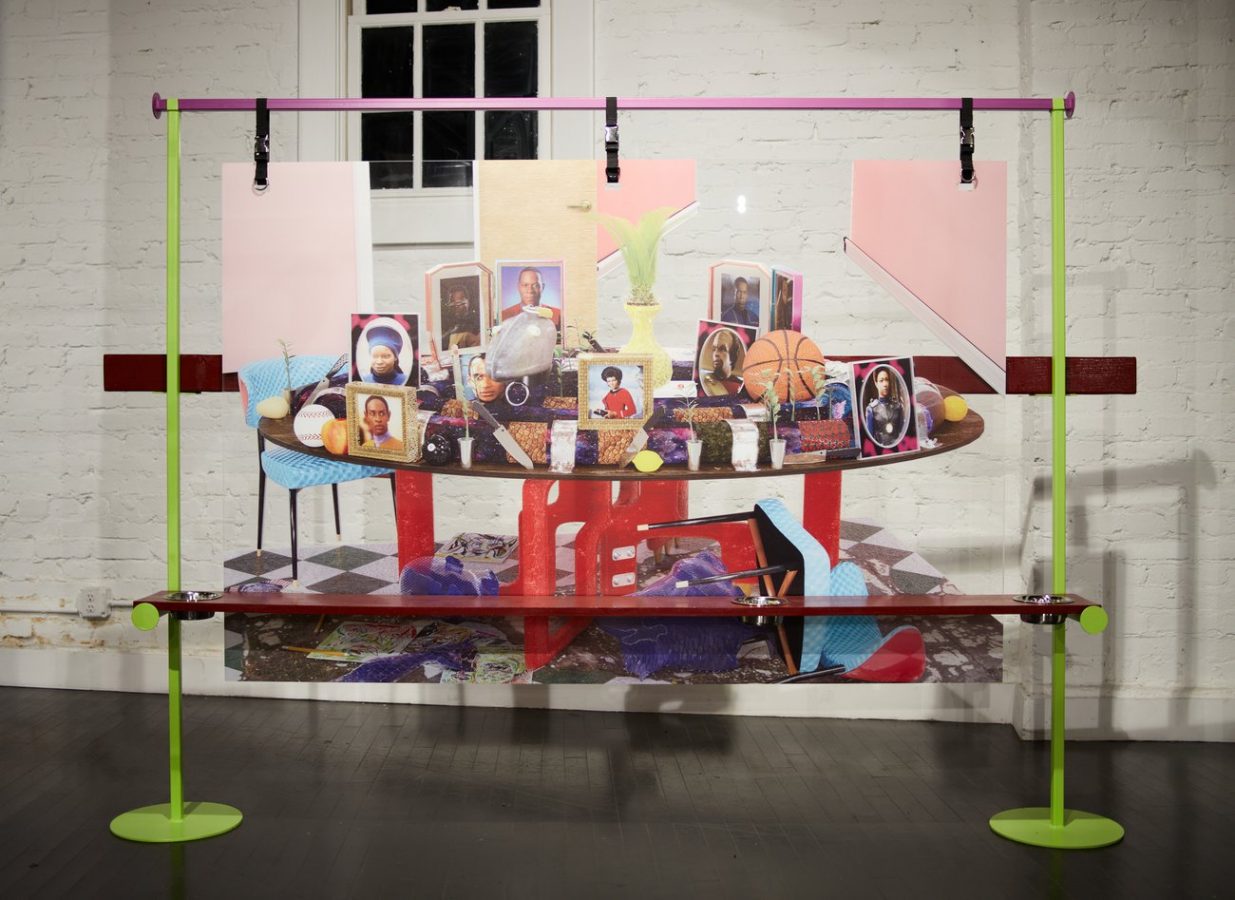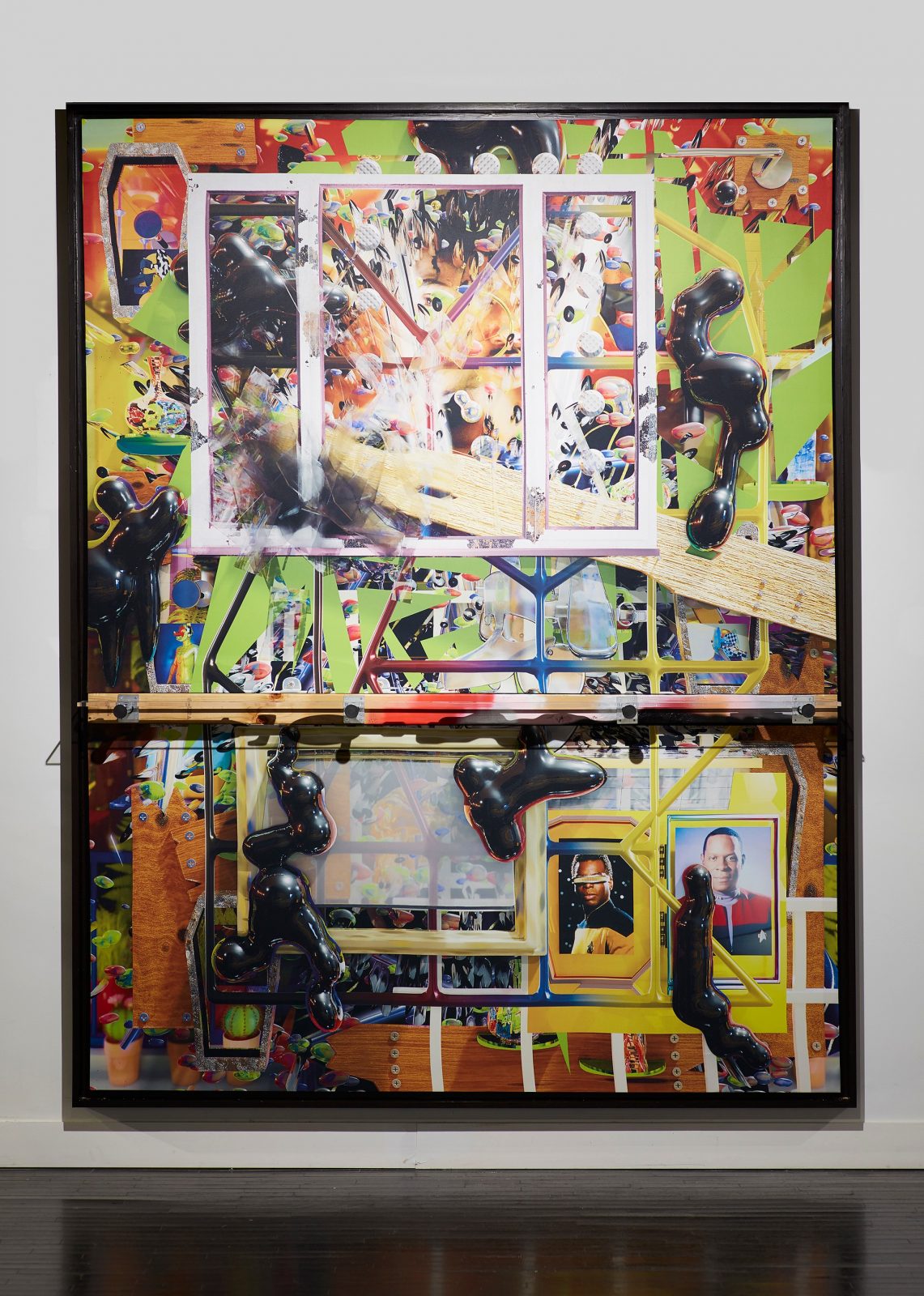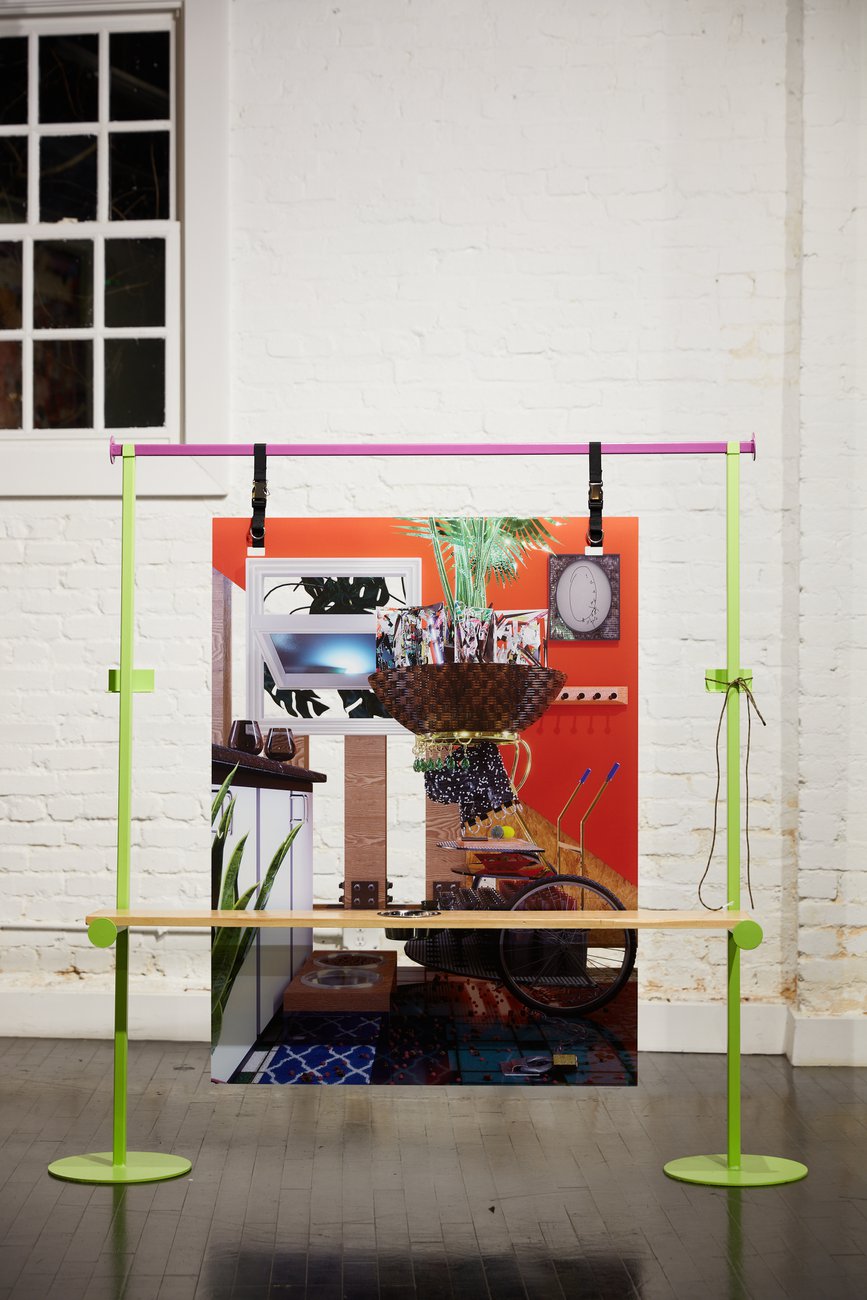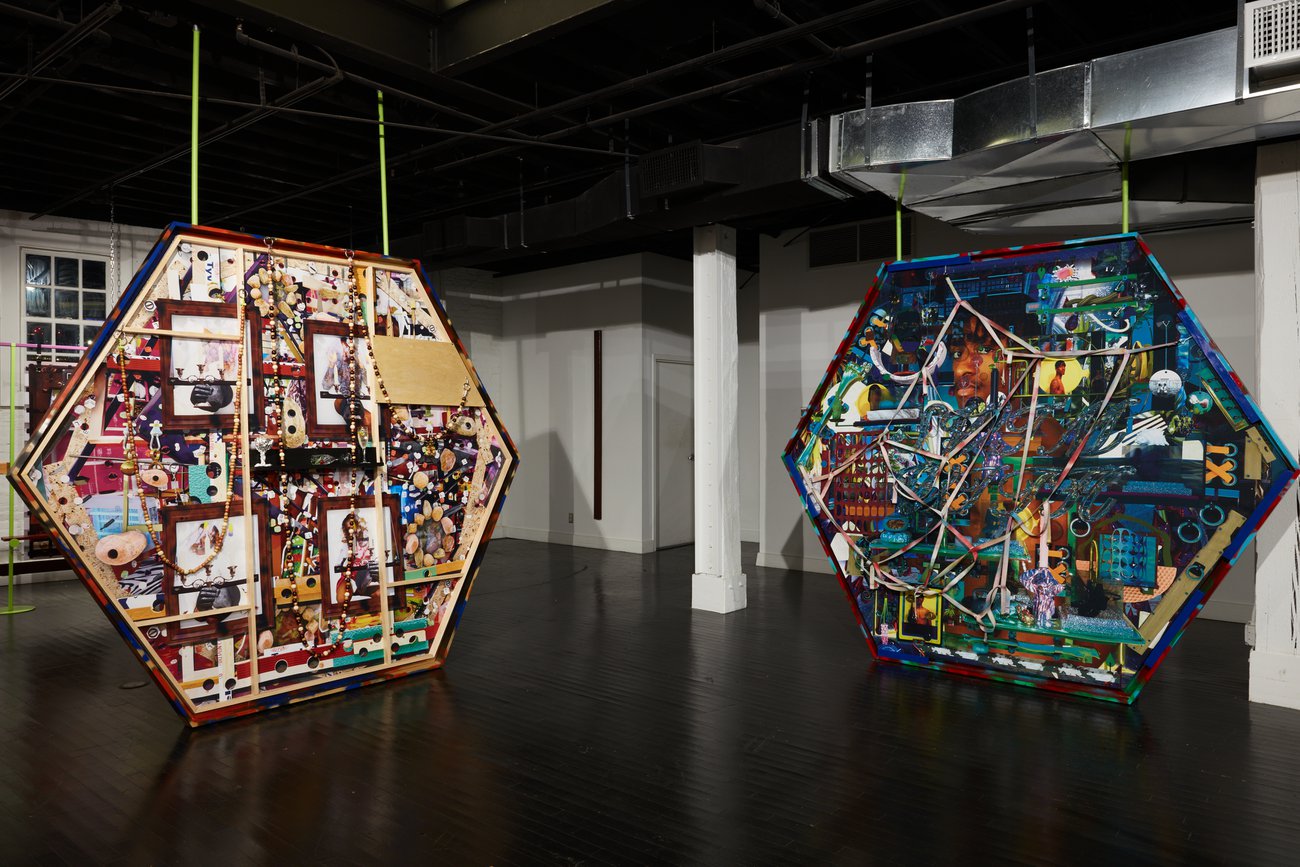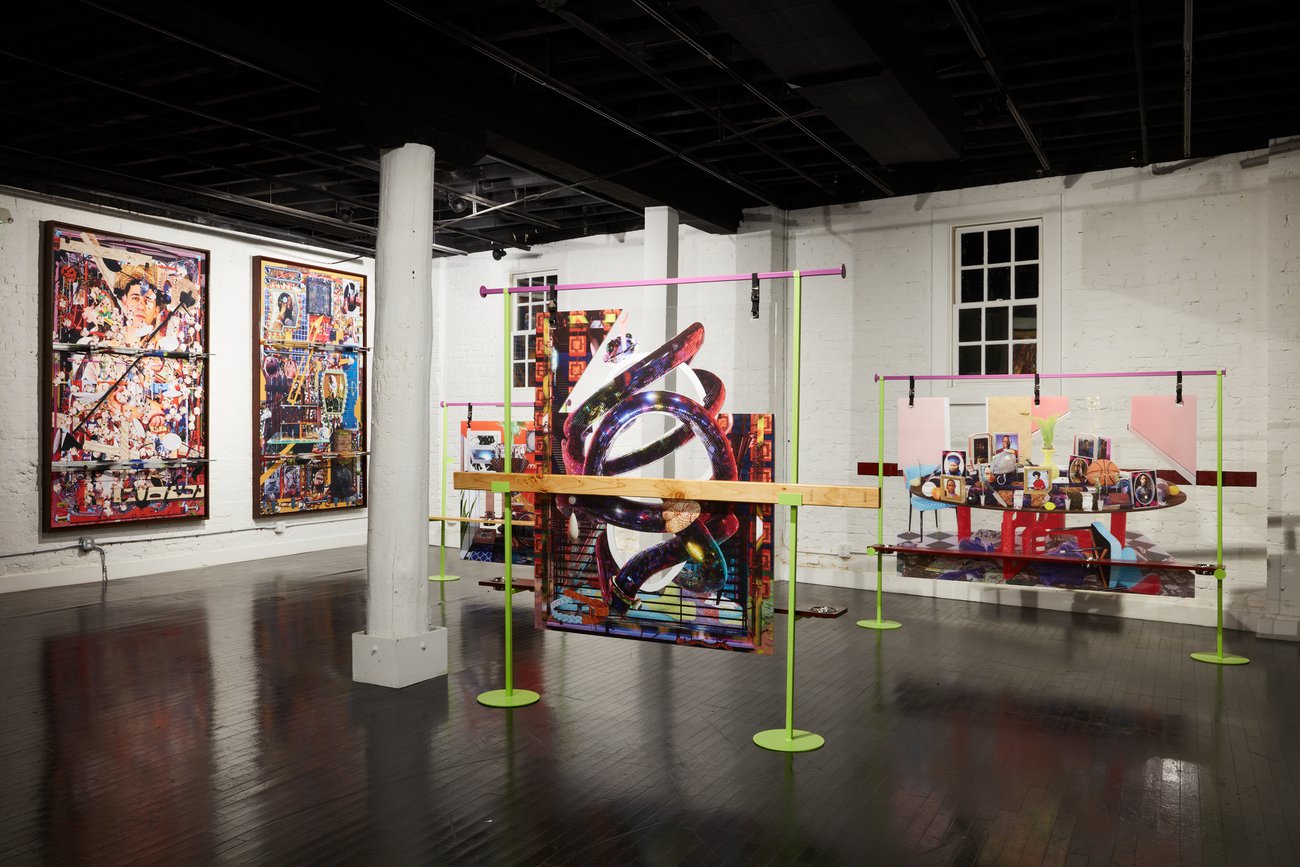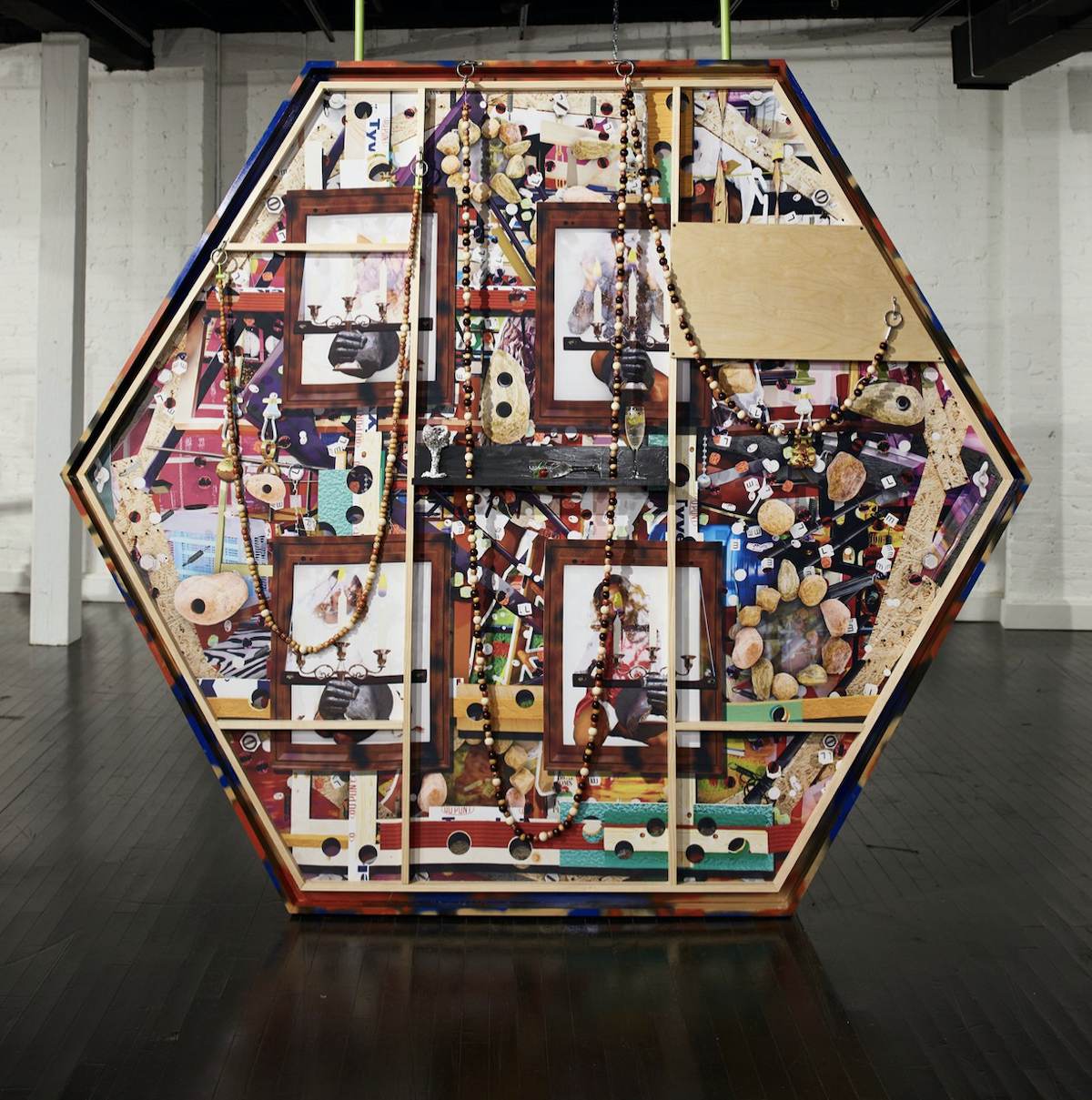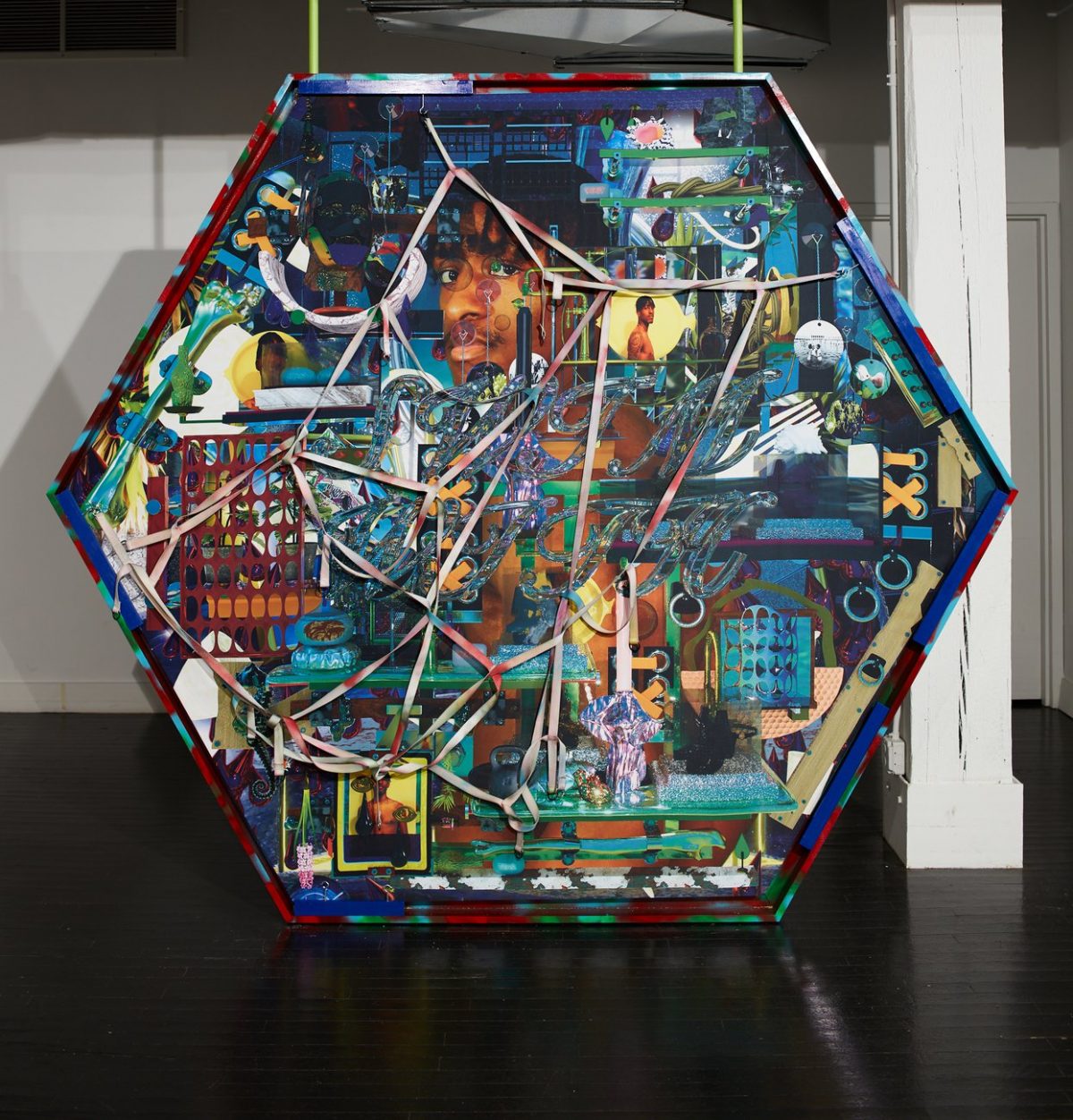If you have spent significant hours on Myspace, Tumblr, Vine, Twitter, or the like, then the “torrent of content” that artist duo Wickerham & Lomax describe in their newest work feels familiar. Those platforms formed our sense of self or, at the very least, allowed us to create and then re-create some aspect of ourselves. The divide between the digital and the real no longer exists, as curator and writer Legacy Russell explores in her newest book, Glitch Feminism. We are plugged in at all times, whether we’re conscious of it or not.
At face value, Domestic QT and The Spatial Anomalies, an exhibition of Wickerham & Lomax’s most recent work at von ammon co in Washington, DC, traces the creation and consumption of this endless tide of content that has come to define our relationship to a digital world—an ordered simulation of reality.
Framed within rectangular or hexagonal canvases and gym-like apparatuses, the work features a variety of both common and uncommon household pets; an emphasis on disembodiment and distortion; gravity-defying orbs and spheres; and alluringly slick surfaces, such as the text “SWIM WITH” in the work “Nymph and the Net” or the mercury-like liquid imposed on “Romance as Intrusion.” As viewers, we are contending with not only the sheer amount of content we view on any given day, but also how we do or don’t make sense of it.
